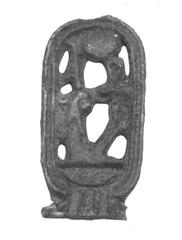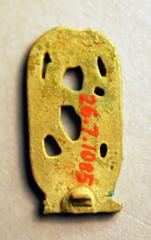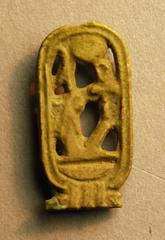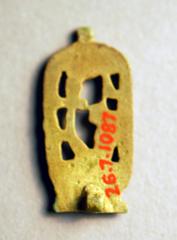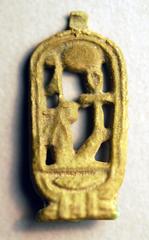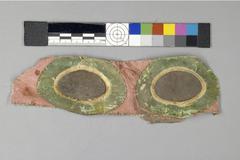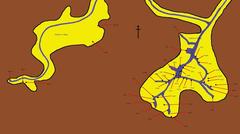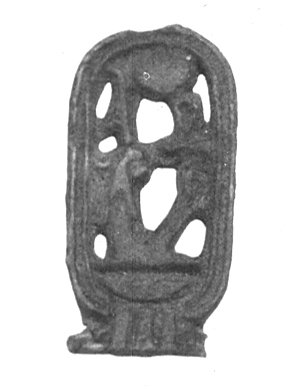
WV22: Tomb of Amenhotep III – Visiting Hours, Tickets, and Essential Travel Guide for Luxor, Egypt
Date: 14/06/2025
Introduction
Tomb WV22, the final resting place of Pharaoh Amenhotep III, is one of the most significant and architecturally impressive royal tombs in Luxor’s Western Valley of the Kings. Renowned for its monumental scale, innovative design, and exquisite funerary art, WV22 offers visitors a rare glimpse into the height of Egypt’s 18th Dynasty. Located in the less-visited “Valley of the Monkeys,” the tomb provides a more secluded and contemplative atmosphere than the bustling East Valley, making it a top destination for history lovers and cultural explorers.
This guide provides comprehensive, up-to-date information on Amenhotep III Tomb visiting hours, WV22 tickets, travel tips, accessibility, architectural highlights, conservation efforts, and nearby attractions, ensuring you have all the knowledge needed for a respectful and enriching visit (Landioustravel; HistorySkills; UNESCO).
Historical Background and Discovery
Tomb WV22 lies approximately 2 kilometers from the Western Valley entrance. Unlike many royal tombs, it is carved into a talus slope rather than solid bedrock. The tomb was first officially recorded in 1799 by engineers Prosper Jollois and Édouard de Villiers du Terrage during Napoleon’s Egyptian expedition, with their findings published in the monumental “Description de l’Égypte.” Throughout the 19th century, WV22 attracted scholars such as Jean-François Champollion, who identified Amenhotep III as the tomb’s owner, and Karl Richard Lepsius, who documented its funerary texts. Unfortunately, in the same period, the tomb suffered from artifact removal and damage, with some original decorations now housed in the Louvre.
Excavations in the early 20th century by Theodore M. Davis and Howard Carter (who later found Tutankhamun’s tomb) revealed significant artifacts, foundation deposits, and evidence linking the tomb to Amenhotep III and other royal family members. Since 1989, a Japanese team from Waseda University has led extensive conservation efforts, stabilizing the tomb’s structure and preserving remaining artwork.
Architectural Features and Artistic Program
Stretching about 85 meters, WV22 stands out for its T-shaped layout, deep entrance corridors, well shaft, and several subsidiary burial chambers, possibly intended for Amenhotep III’s wives Tiye and Sitamen. Although much of the original decoration has been lost to looting and natural decay, the tomb’s remaining wall paintings and reliefs exemplify the artistic mastery of the New Kingdom. Key decorative elements include intricate scenes from the Amduat and Litany of Re, depictions of Amenhotep III with deities, and protective symbols such as the djed pillar and tyet knot (HistorySkills).
Archaeological Discoveries and Conservation
WV22 has yielded fragmented funerary equipment, ostraca, and architectural innovations that influenced later tombs, including those of Akhenaten and Tutankhamun. The tomb has faced significant challenges from ancient looting and environmental threats, making ongoing conservation efforts critical. International teams, especially from Japan and UNESCO, continue to stabilize the tomb, monitor environmental conditions, and digitally document its remaining art (thearchaeologist.org).
Visiting WV22: Hours, Tickets, and Accessibility
Current Status
WV22 is currently closed to the general public due to its fragile condition and active conservation work (We Seek Travel). There are no regular visiting hours or tickets available for WV22 at this time. However, its anticipated reopening is subject to the progress of ongoing preservation and may involve limited access or guided tours only.
General Valley of the Kings Information
- Opening Hours: Typically open daily from 6:00–6:30 AM to 5:00–6:00 PM, with slight variations depending on season and religious holidays. Confirm with official sources before your visit.
- Tickets: General entry tickets grant access to select tombs in the Valley of the Kings. Special tombs (e.g., Tutankhamun, Seti I, Ramesses VI) require additional tickets. WV22 is expected to follow this model upon reopening.
- Purchasing Tickets: Tickets are available at the main entrance or online via authorized vendors. Prices vary for international visitors, Egyptian nationals, and students.
- Accessibility: The approach to WV22 involves uneven paths and staircases, making it challenging for visitors with mobility issues. Comfortable footwear, sun protection, and water are essential.
For the latest updates on WV22’s status, consult the Egyptian Ministry of Tourism, Valley of the Kings Official Site, or UNESCO.
Guided Tours and Visitor Experience
Guided tours—whether through official site guides or reputable tour operators—are highly recommended. Expert guides provide in-depth historical and cultural context, help visitors interpret surviving artwork, and ensure compliance with site regulations. Audio guides and printed materials are increasingly available, thanks to ongoing international collaboration (UNESCO).
Site Etiquette and Photography
Photography rules are strictly enforced throughout the Valley of the Kings. Cellphone photography is generally allowed (without flash), but professional cameras require a separate photo pass and flash is strictly prohibited (Salt in Our Hair). Always respect signage, staff instructions, and do not touch walls or artifacts to help protect the tomb for future generations.
Practical Travel Tips
- Arrive Early: Beat the heat and crowds by visiting in the morning.
- Dress Appropriately: Wear light, breathable clothing, hats, and sturdy shoes.
- Stay Hydrated: Bring water, especially during hotter months.
- Facilities: Restrooms and refreshments are available at the visitor center, but not at the tomb itself.
- Combine Visits: Enhance your itinerary with other sites such as the Mortuary Temple of Amenhotep III, Colossi of Memnon, and open tombs like KV62 (Tutankhamun) and KV35 (Amenhotep II).
Community Engagement and Cultural Experiences
WV22 is not only an archaeological marvel but also a hub for community engagement. Supported by UNESCO and Japanese partners, local youth, women, and professionals participate in heritage workshops, creative programs, and reinterpretation of Amenhotep III’s legacy. These efforts foster stewardship, inclusivity, and dynamic museum experiences for visitors of all ages (UNESCO).
Accessibility and Inclusivity
While efforts are underway to improve accessibility, the West Valley’s rugged terrain and the tomb’s architecture present challenges for visitors with limited mobility. It is advisable to inquire ahead about ramps or alternative transport options, and to consult with local guides or visitor services (Audiala).
Frequently Asked Questions (FAQ)
Q: Is the Tomb of Amenhotep III (WV22) currently open to visitors?
A: WV22 is currently closed for conservation. Check official sources for updates on reopening.
Q: What are the Valley of the Kings’ visiting hours?
A: Generally open from 6:00/6:30 AM to 5:00/6:00 PM, but always verify before visiting.
Q: How can I buy tickets?
A: Tickets are available at the entrance or online; special tombs require separate tickets.
Q: Are guided tours available?
A: Yes, and they are highly recommended for deeper understanding and compliance with site rules.
Q: Can I take photos inside the tombs?
A: Cellphone photography is usually allowed without flash. For professional cameras, purchase a photo pass.
Q: Is WV22 wheelchair accessible?
A: The terrain and architecture limit accessibility; contact visitor services for details.
Integrating WV22 into Your Luxor Itinerary
While WV22 remains closed, visitors can explore other rich sites in Luxor’s West Bank, including the Valley of the Queens, Ramesseum, and Colossi of Memnon. Combine your visit with cultural activities, local festivals, and artisan markets for a well-rounded experience (Nomads Travel Guide).
Conservation and Sustainable Tourism
WV22’s preservation is a global priority, with international teams working to safeguard its fragile artwork and structure. All visitors play a crucial role by adhering to site regulations, supporting local communities, and choosing sustainable tourism options (UNESCO).
Visuals and Interactive Experiences
For trip planning and deeper engagement, use interactive maps, virtual tours, and high-quality images with descriptive alt tags (e.g., “Tomb of Amenhotep III visiting hours” or “Luxor historical sites”). These resources help visualize the significance and layout of WV22.
Conclusion and Final Travel Advice
Tomb WV22 stands as a testament to the architectural brilliance and cultural achievements of Amenhotep III’s era. Although public access is currently restricted, the site’s ongoing conservation, community involvement, and role in Egypt’s heritage landscape make it an essential subject for travelers and scholars alike. Plan your trip with care—consult official updates, respect preservation efforts, and enrich your Luxor journey with local experiences and guided insights.
Stay updated with resources like the Audiala app, consult official tourism websites, and follow social media for the latest developments on WV22 and other Luxor monuments. By approaching your visit with curiosity and respect, you contribute to the preservation and appreciation of Egypt’s extraordinary legacy.
References and Official Resources
- Landioustravel: Tomb WV22
- HistorySkills: Valley of the Kings
- Ancient Society: WV22
- UNESCO: Preservation Process
- UNESCO: Community Engagement at WV22
- We Seek Travel: Valley of the Kings Guide
- Salt in Our Hair: Luxor Guide
- Audiala: Mortuary Temple of Amenhotep III
- Nomads Travel Guide: Luxor
- Egyptian Ministry of Tourism
- Valley of the Kings Official Site
